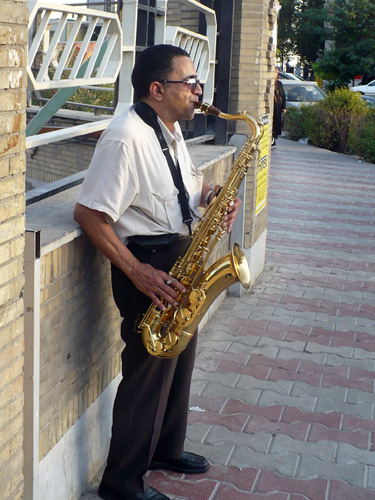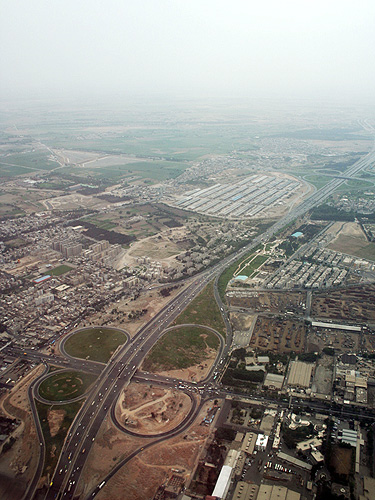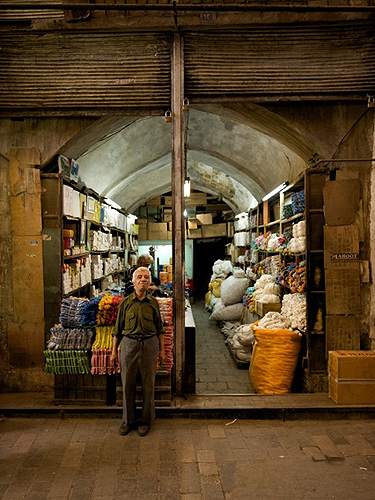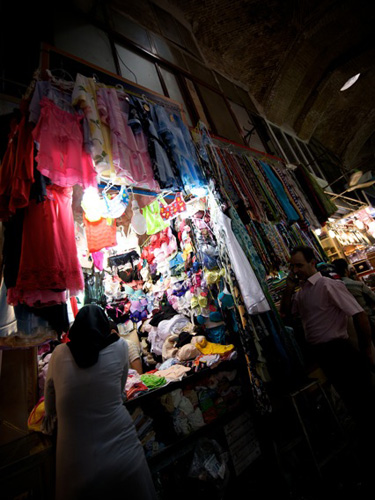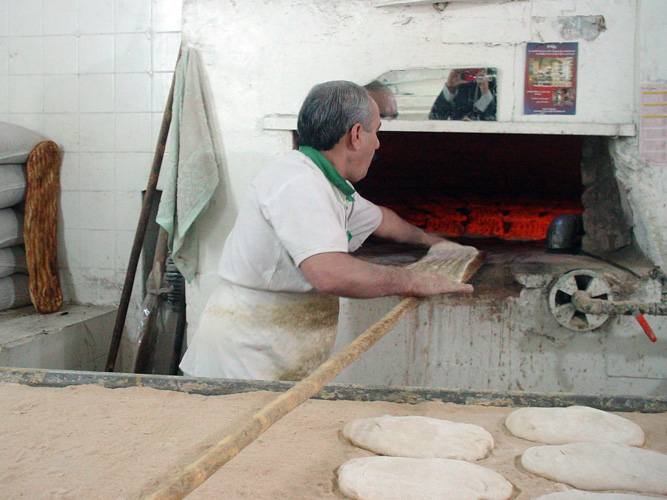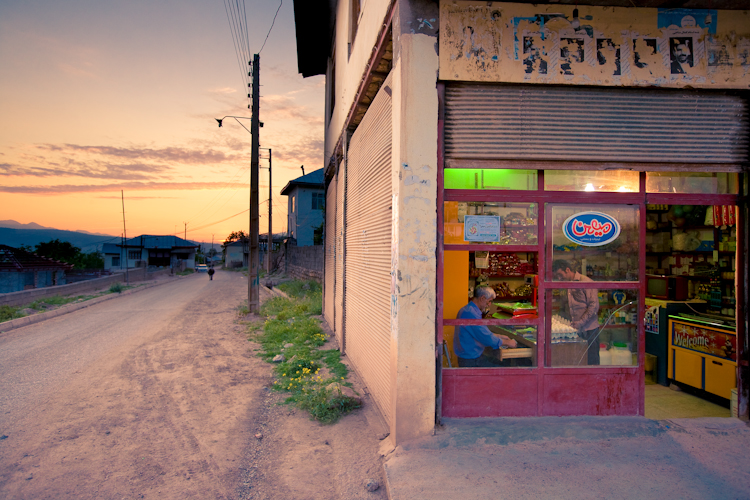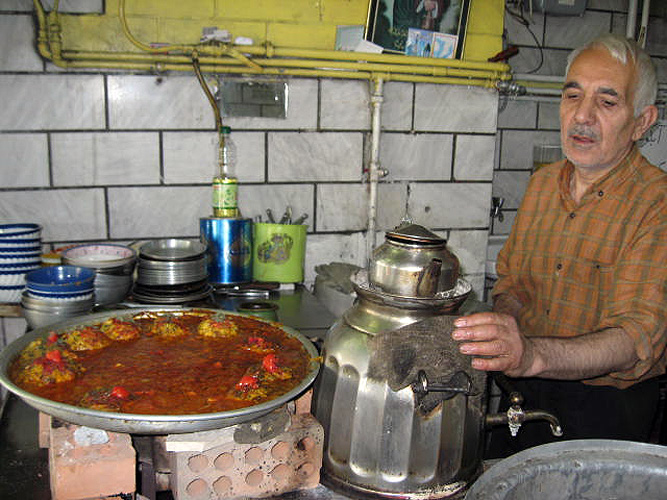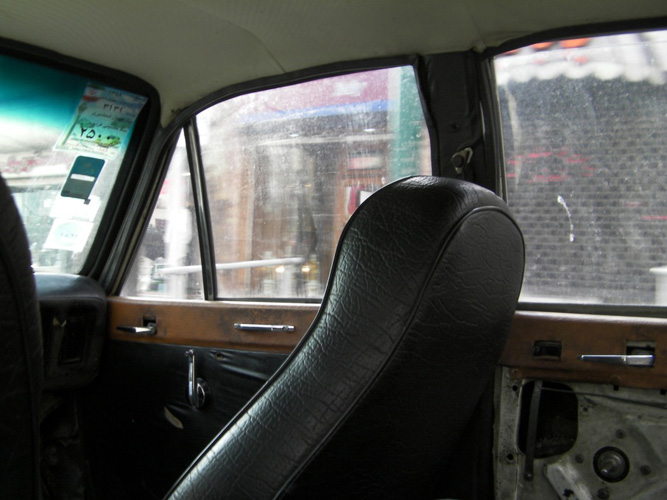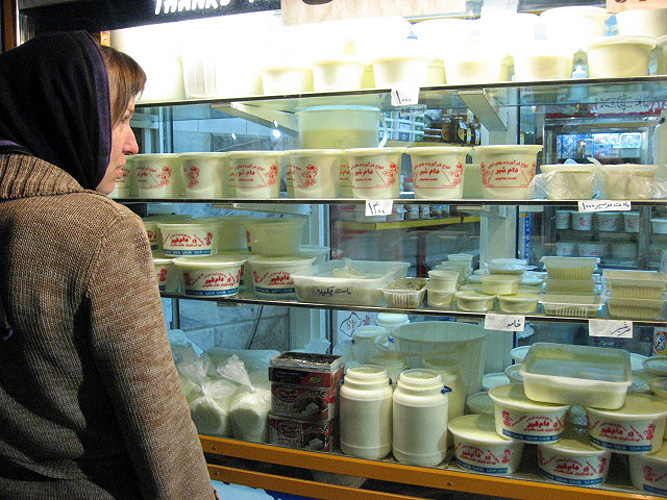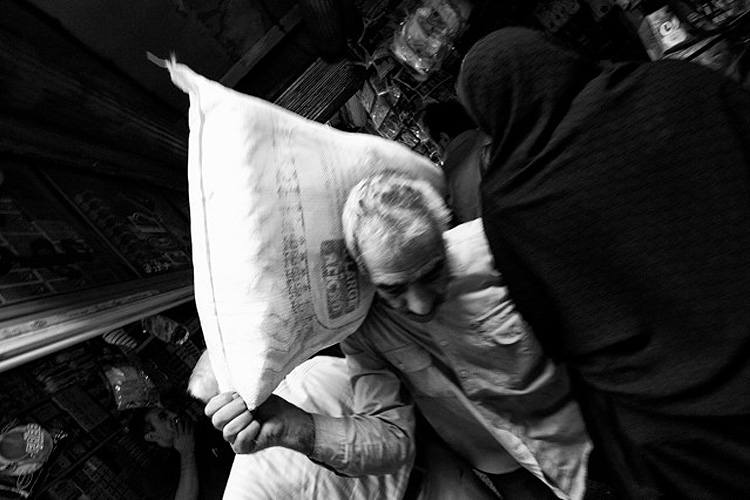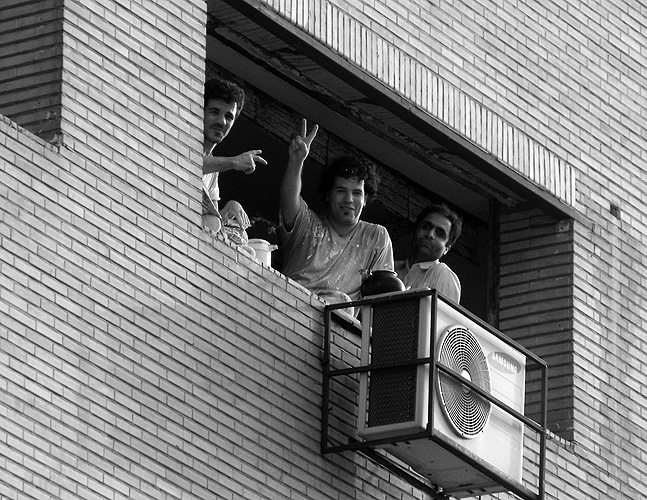Last month I asked that you submit your own photos of Tehran. The following photos were submitted by a number of wonderful individuals. Captions in italics were submitted by photographers themselves while my captions are in normal non-italics font style. It's great seeing Tehran from more points of view than one. Hope you enjoy and I hope to see more submissions in the coming months. These are too valuable to be stopped... |
"I saw the best minds of my generation destroyed by madness, starving hysterical naked, ……floating across the tops of cities contemplating jazz." |
An angle on Tehran University's buildings. TU is home to some of the most politically active students and ever since the post-election protests many of Tehran University students have been arrested and jailed. The student movement is at the forefront of the Green Movement. |
A bird's eye view of Tehran from the top of the Milad Tower. At least that's what I think, the photographer didn't provide any information as to where this was taken from! |
Metro 01: People waiting in a row, a train gets into the station, they get in, another work day starts.
Metro 02: Just another day sitting in metro train on my way home. |
I'm not Iranian, but sometimes I guess a small part of me is.
I am always amazed at how foreigners view Iran. They sometimes notice details and specifics that go unnoticed by Iranians. For example I can't believe I've never featured a photo of a "sofreh." The sheet you put on the ground and eat lunch and or dinner on!
|
A set of wonderful photographs from Tehran's old Bazaar, the capitol's most important financial hub. The bazaaris control Iran's economy. The smallest shop in the Bazaar costs hundreds of thousands of dollars. More modern shopping malls of northern Tehran are the grandchildren of the old Bazaar. |
Victoria's Secret on display at a shop in the Bazaar! |
Light dances on the tile work at the Golestan Palace in Tehran. |
The process of making probably the best bread in the world. Don't you miss Iran's fantastic Barbari bread? Makes the perfect breakfast with some tea and khameh (cream). |
Tehran's International Book Convention. Thousands often attend these book showcases and you wonder if Iranians are avid book readers. By some accounts they are, but actual numbers of book sales tell a different story. Considering the state of censorship in Iran, the most interesting books are ones that are either not published or are published without permission. So these government sanctioned book shows are simply an illusion of a free and open Iran where the government does not dictate what can be written and what cannot. |
When there is no separation of Mosque and State, places of of worship that are supposed to be holy are politicized and become associated with their oppressive theocratic rulers. I see a mosque and I think of the bearded plain-clothes basiji hoodlums who beat and rape young Iranians whose crime is demanding change and freedom. I see a mosque and I think not of a place for prayer and peace, but of a dungeon for torture and blasphemy. I often wonder if the true believers think of the damage the hardliners in power are inflicting on their religion and if they will ever rise up to defend their beliefs. |
Village store, Pul, Northern Iran. (more photos by James Longley)
|
I first came to live and work in Iran in 2002. I was the operations manager that delivered the opening of Wonderland Tehran -- the first Family Entertainment Center in Iran. I managed a team of 40+ Iranians to operate the facility to western standards. I invested in people and ... (read more) |
I've never seen anywhere else anything that looked like this old shopping area of Tehran. |
Life goes on in Tehrangeles!
The absence of traffic on Santa Monica Freeway (I-10 West) was extraordinary enough in itself, but then this yellow truck came out of the blue and added to the surreal flavor of the moment. With that sight, I was invaded by nostalgic memories of streets, scents, flavors, and all other sorts of images of a childhood long gone in my city, in Tehran! A Tehran that I left behind, but a Tehran that I am carrying with me everywhere I go. To show that regardless of what some people think about the Iranians of LA, despite the distance that separates those abroad in self-imposed exile and those at home fighting for their basic freedoms, Tehran is alive and well in our hearts, and in our lives, every moment of every day, even if it's in the ridiculous shape of an old yellow ice cream truck on a Californian freeway. |
There are many a great details in this photograph. There is the make-shift oven with the gas line that comes off the wall, the bricks they must have taken from a construction site and the halabi tray that heats up the greasy and yet tasty meat loafs known as koofteh. Then there is the aging samovar that has probably served a million gallons of tea. The gray tiles that cover the walls of similar eateries across south Tehran. The blue ceramic bowls, the Ladan solid cooking oil, the religious poster on the wall and the sink in the back corner for washing hands. To top it all off, a middle-aged man whose face is telling of a story entirely of his own. |
Inside a Paykan. Iran's "national" car for decades. Nowadays the aged fleet of Paykans are in the hands of taxi drivers. They smell of burned oil, gas and sweat. Up until fifteen years ago everyone in Iran either owned a Paykan or a Renault 5. I myself learned how to drive on a yellow Paykan Javanan when I was thirteen! |
There are stores that sell only dairy called labaniati. They often have their own products and you don't see the flashy colorful packaging of the more industrial versions you find elsewhere. In these photos you can find cream, milk fat, yogurt, yogurt with shallots, cheese and a yogurt drink known as doogh that can be served in plastic bags. |
The old man and the sack. |
Portrait of an elderly man in the city of Yazd in southern Iran. |
While I was visiting Iran after 10 years on June 25th 2009 and walking in Gandhi Avenue Toward Gandhi shopping center and taking pictures, I heard a couple of workers shouting and waving at me from an unfinished building (they thought I am a tourist because of my Indian outfit!). When I pointed my camera to the building, the workers showed me the Victory sign. |
The traditional sabze from Nowruz celebrations which marked the new Iranian year of 1389. Opposition leader Mir Hossein Mousavi has named 1389 the year of Patience and Perseverance. 1388 was a significant year in the history of modern Iran. It will be remembered as the year which marked the beginning of the end of a regime that brutally killed, tortured and raped to stay in power and did not give in to the demands of its people... |

